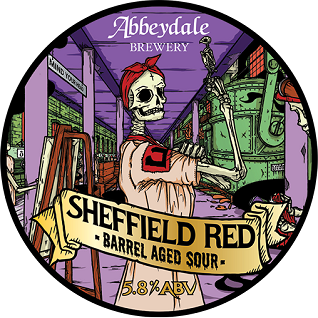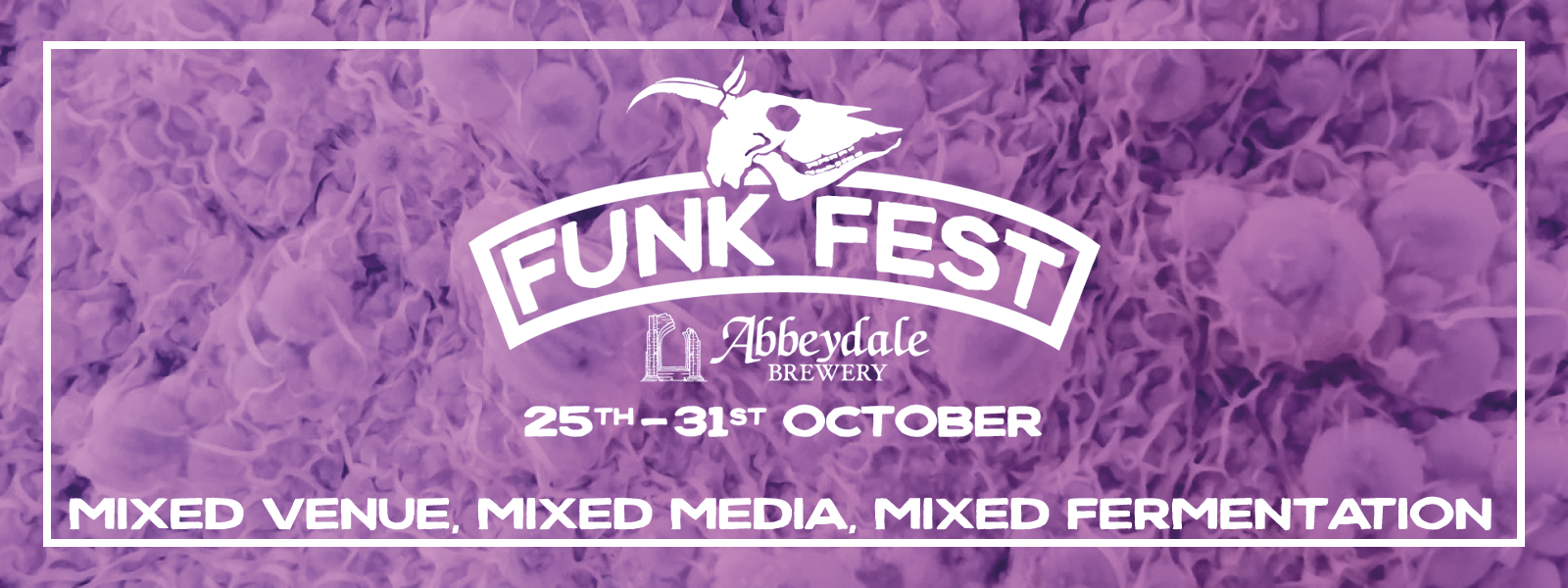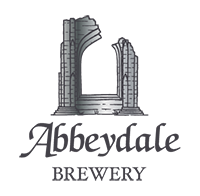Sheffield Red

*This post was originally shared as a Twitter thread on our @AbbeydaleFunk account by our brewer Jim, which commenced in March 2020. It went down pretty well, so we thought we’d share it a little more widely!
“We thought we’d give you a glimpse into a particularly atypical brewday here by going through the process for this year’s release (editor’s note: now the 2021 release!) of Funk Dungeon: Sheffield Red.
This is the third brew of this beer over 3 years, but each batch has a variation in process and ingredients – as the beer develops in wood, and flavour character shifts in time, we have made adjustments to the base beer to reflect our intended character ready for blending for the main release.
The first step of the process is, as always, mashing in – we don’t brew to any particular regime associated with other styles of sour beer, such as the decoction mash schedules linked with Lambic or traditional Berlinerweisse production – for us it is difficult, and largely pointless.
We mashed in at a higher temperature than normal (around 69-70c, compared to our more usual 64-66c) and for around 45 minutes, compared to the hour that we stick to for most of our wort production. This iso-thermal stand helps to produce complex sugars designed for slow fermentation, so there is plenty for the brett to eat over time and enable further development of the final beer.
We like our Funk Dungeon brews to be a little more experimental with our malt grists, too. Previously we’ve used a high percentage of grains such as wheat, oats, or spelt, and this time we are going for rye, for colour (roast rye) and a little bit of residual sweetness (Crystal rye). A simple water treatment of gypsum for pH adjustment is the final addition, before the mash is left to stand with a slow vorlauf (mash recirculation), for greater wort clarity.
The next step is to start running the wort from the mashtun through to the kettle. We will wash some of the colour and more from the dark malts as we sparge (like a sprinkler system for beer). The sparge temperature then rises to 86C which will denature enzyme activity quickly, again allowing for slow fermentation. There is still some colour and some sugar left in the grain. But for this recipe we are aiming for a reasonable starting gravity, so we’ll stop at PG 1014 and 12EBC. Stopping at this stage also aids clarity later on, as we don’t sparge through too many polypeptides, that could cause flavour faults and haze in the finished beer.
It’s now time to bring that wort to the boil where we’ll also add our first hops. We are bittering to an IBU of 30 using some 2015 harvest Dr Rudi for a grassy, herbal spice character which should marry well with the rye and the oak. It will also give just a little hint of isovaleric "cheesiness" that is so prominent in Lambic and other aged styles.
The boil takes 90-100 minutes which encourages the Maillard reaction (a chemical reaction which leads to a darker colour… the same thing that happens when you sear a steak on a griddle pan), giving us a pleasant caramel that will be present in the final beer, which works well with the dry acidity after fermentation is complete.
Once the boil is complete, we run the wort into our hopback which is where the rest of our hops are waiting. This is a step we perform for pretty much every beer we make at Abbeydale, although not that many breweries have access to a hopback. The late steep of whole hops provides a rounded softer bitterness than if used in the kettle and doesn’t blast off as many of the fruity and floral notes – this is what has helped us become so well known for our delicate, hoppy pales, but turns out it is also useful for a sour red ale!
 The next part of the process is something we aren’t quite so familiar with, having only done it once before… COOLSHIP FILLING! Whilst we aren’t inoculating the entire brew length of this brew with wild yeasts, we are aiming to encourage some little floaty beasties to have an influence on the beer overall. (I keep calling it a coolship. But its dimensions are not really suited to chilling the entirety of the wort in a time that is advisable. I am using it more in this case as a yeast capture mechanism, which will be blended with pre-pitched wort.)
The next part of the process is something we aren’t quite so familiar with, having only done it once before… COOLSHIP FILLING! Whilst we aren’t inoculating the entire brew length of this brew with wild yeasts, we are aiming to encourage some little floaty beasties to have an influence on the beer overall. (I keep calling it a coolship. But its dimensions are not really suited to chilling the entirety of the wort in a time that is advisable. I am using it more in this case as a yeast capture mechanism, which will be blended with pre-pitched wort.)
At this stage, we’re ready to transfer into fermenting vessel, which has been prepped a little differently to usual. Ordinarily, all yeast matter would be disposed of once a beer has done its time in FV, and a full CIP (clean-in-place) undertaken before refilling, but in this case we are transferring the wort into one of our stainless steel tanks which has only just been emptied of our most recent (at the time) Funk Dungeon brew (this was Through the Sticks, a collaboration with the one and only Little Earth Project) and we’re leaving the yeast bed behind for today’s brew to feed on. Racking straight onto the yeast bed means we should aim to avoid much of the "lag" phase for the yeasts. This “krausening” speeds up fermentation as the yeast goes straight on to consuming sugar.
For now the wort will sit overnight and we’ll blend it in FV and give it a week maybe 10 days or so to ferment around 90% of its journey to PG1000.0 before transferring into oak.
We’ll pitch our house Brett blend (which we call Barbarella) into barrels as well. Barbarella has 15 or so different strains of Brett (built over time from a combination of various commercially available blends and some lab pitches) stored in a wooden firkin ready to deploy. The blend is able to be used for primary and secondary fermentation, and is overall an amalgamation of Saccharomyces var. Diastaticus, our house (clean) Saccharomyces, a few lactobacillus strains harvested from grain, and Brett. The main character we see with this is a dry, light lemony refreshing finish.
Once everything is in FV, it’s time to dig the hops and get everything very well cleaned and shiny, ready for the next brew.
Day 2: Fermentation is flying – around 25% of the total expected fermentation has happened in around 18 hours. The pH has dropped like any saccharomyces fermentation, from 4.98 to 4.55, and the Krausen is happily blipping away.
Whilst the beer-to-be is still in the coolship we are recirculating the wort – while largely unnecessary as we are transferring everything into one fermenting vessel, when racking to barrels this ensures even mixing of yeast and bacteria on the surface is mixed thoroughly throughout.
We’ve lost around 7% of the wort to evaporation and the temperature has dropped from 88c down to 27c, which is a little too slow for full spontaneous fermentation, but enough for some bacterial capture (strains of lactobacillus are far more comfortable at the higher end of the temperature band).
With the aim of better understanding the contribution of the coolship to our house saison yeast we are separately force fermenting the wort with a stir plate in the lab – we’ll take a look-see under a microscope after a few days…
Day 6: After almost a week on the stir plate, we’ve had a yeast Krausen rise and fall in the flask. The sacch performed an attenuation of 69%, leaving the beer at 4.94% and the pH dropped quickly. The beer tastes a little lemony, and whatever the coolship welcomed in is certainly a positive addition to the yeast blend overall.
These are strange times at the moment, but for this beer, time will itself be the key and with the right attention it will be ready when you are. When we get through all this and safely out the other side, we’ll grab a beer and think of times gone past and those still to come.”
….Fast forward to July 2021 and the beer is ready for blending decisions to be made! The beers have been resting in a mixture of French red wine and neutral American oak for anywhere between one and three years. Each and every barrel had a sample taken and was tasted individually to assess their major flavour characteristics to see what they would contribute to the final beer (and to check for any flavour faults). Happily we didn’t find any off flavours in any of the barrels, but some had a more pronounced wood character than others. The volume of each was carefully considered to make sure the resulting blend showcased the very best that the beer could be.
And we’re now into September, and that “resulting blend”, around 50% of which is the brew outlined above, is due to be released next week! Introducing Sheffield Red – Barrel Aged Sour (5.8%). Tart upfront, there’s a burst of acidity from the very first sip. An abundance of red fruit flavours, grape skin tannins and sour cherry notes, all pulled together by a gently oaky backbone.
The beer will be available in keg and can from next week, and will be one of the beers in the spotlight at our Funk Fest mixed fermentation multi-venue beer festival! As well as pouring at some of the participating venues (more on that coming soon) cans will also be included as part of a special festival tasting set, which will be available on our online shop to pre-order very soon!
Cheers,
Jim





